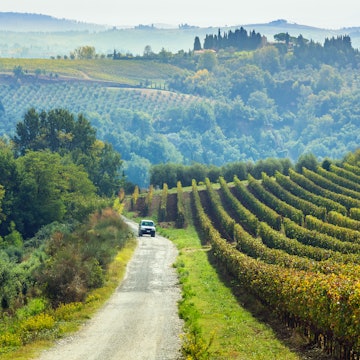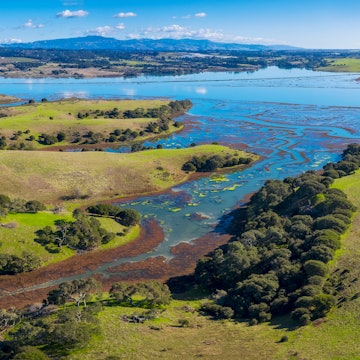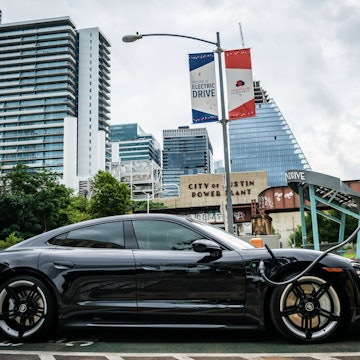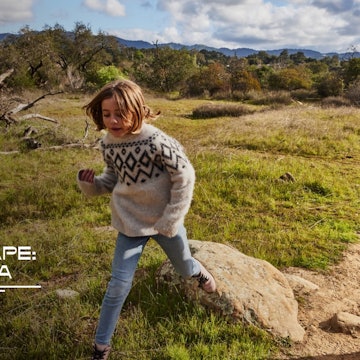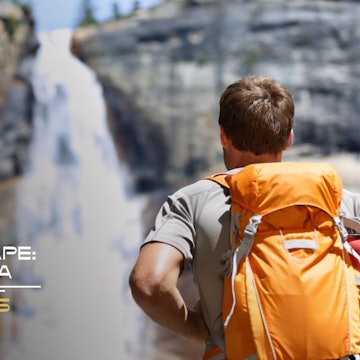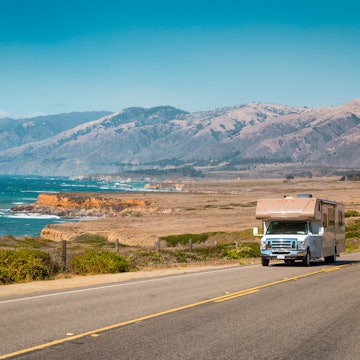

The road to Point Reyes. Benjamin Heath for Lonely Planet
I love road-tripping through New England in the fall – doesn’t everyone? The blazing maples, the crisp air. But what I don’t love is the crowds and the cold snaps. Over the years, I’ve wandered all along Northern California’s coast, writing about budget-friendly jaunts and taking wine-country detours, and I can’t think of a better offbeat alternative for fall travelers than the oyster-filled and redwood-framed drive from Monterey to Mendocino.
It’s the perfect mash-up: stormy coastline, fresh seafood, fog-draped mornings and tiny towns that buzz with creativity, not crowds. You can try your hand at shucking oysters (and digging into Dungeness crab legs once it gets colder) and trade leaf-peeping for sea gazing. The Northern California coast is dramatic yet peaceful and full of surprises.
Along the way, you’ll thread Hwy 1 and its coastal siblings, stopping at Monterey, Carmel, Big Sur, Bodega Bay and Mendocino (with optional extensions further north). Expect moody skies, whale migration when winter sets in and some spectacular sunsets after the fog has long burned off.
So pack your appetite, your raincoat and your curiosity, and hit the highway for the perfect chilly coastal NorCal road trip.
Trip length: In 5–7 days (you can stretch it longer), you can cover about 270 miles, plus many scenic detours.
When to start and where to end: Begin in Monterey or Carmel and end in Mendocino (or continue north if you have extra days).
Things to know: Hwy 1 has landslide closures (especially around Big Sur) – always check the road status before departing. Some stretches are very twisty and slow. Gas stations can be sparse in remote coastal segments, so don’t let your tank get too low (I learned this the hard way and had to double back). Cell service drops frequently, so download maps or bring a physical road atlas.
What to pack: Layers are the plan (fleece, merino wool midlayers, a waterproof shell), along with a compact umbrella, binoculars, good walking shoes and a flashlight (for headlands at dusk).




Stop 1: Monterey and Carmel-by-the-Sea
Vibes: Fog, sea lions, tide pools, galleries and storybook cottages – Carmel feels like a fairy-tale art village; Monterey adds history and marine life, Steinbeck sights for the lit nerds and, of course, fish tacos.
Do: Do not skip the Monterey Bay Aquarium; it’s especially excellent in fall when summertime crowds thin and you may even get those peaceful kelp forests all to yourself. Walk Cannery Row, or take a whale-watching cruise (seasonally, fall is still good). In Carmel, wander down the Scenic Road Walkway on the bluff from Carmel Beach to Carmel River State Beach, poke into art galleries, visit the Carmel mission, and explore the famed 17-Mile Drive along the coast, with ocean vistas and cypress groves.
Eat: Sample fresh local oysters or clam chowder at waterfront spots in Monterey or Moss Landing. In Carmel, try farm-to-table menus or cozy bistros with local seafood.
Stay: Overnight at Monterey Beach Hotel, the town’s only beachfront hotel. It boasts seaside saunas, local wine on tap (free for guests) and a top-notch restaurant perched above the crashing waves.
The drive: Go north 45 miles, about 90 minutes, to the Santa Cruz and Capitola area (a lovely beach town), then onward to San Francisco. The drive winds through forested hills and coastal bluffs – stop at viewpoints along Hwy 1. Fill up with gas before heading out of the Monterey Peninsula.


Stop 2: San Francisco
Vibes: Iconic, eclectic and endlessly photogenic, the city is a microcosm of Northern California itself.
Do: Spend the morning walking Crissy Field and watching surfers dip and rise under the Golden Gate Bridge. Drive or bike across the bridge for sweeping bay-to-ocean views. Explore the Presidio, now home to wooded trails and the Walt Disney Family Museum. If you have time, duck into the Ferry Building for artisanal snacks and coffee, or browse the weekend farmers market.
For a fall bonus: Detour through Golden Gate Park, where the Japanese Tea Garden and red-gold gingko trees give the faintest nod to New England.
Eat: Lunch at Hog Island Oyster Co. in the Ferry Building – order a dozen oysters and a local sauvignon blanc while watching ferries drift by. Or try Swan Oyster Depot, an old-school seafood counter beloved by chefs and locals alike.
Stay: Check into W San Francisco for plush accommodations just steps from all the action – the hotel practically shares a wall with the brain candy that is the San Francisco Museum of Modern Art. Pro tip? The Buzz & Brunch Beehive Experience lets you dive into rooftop beekeeping right at the hotel – and enjoy the sweet spoils with your pancakes.
The drive: The segment to Tomales Bay is approximately 40 miles (90 minutes). Leave the city via the Golden Gate Bridge, then meander through Marin’s rolling hills. Stop in Sausalito or Mill Valley for snacks before the coastal wilderness takes over. Gas up before Point Reyes – services are limited past there.
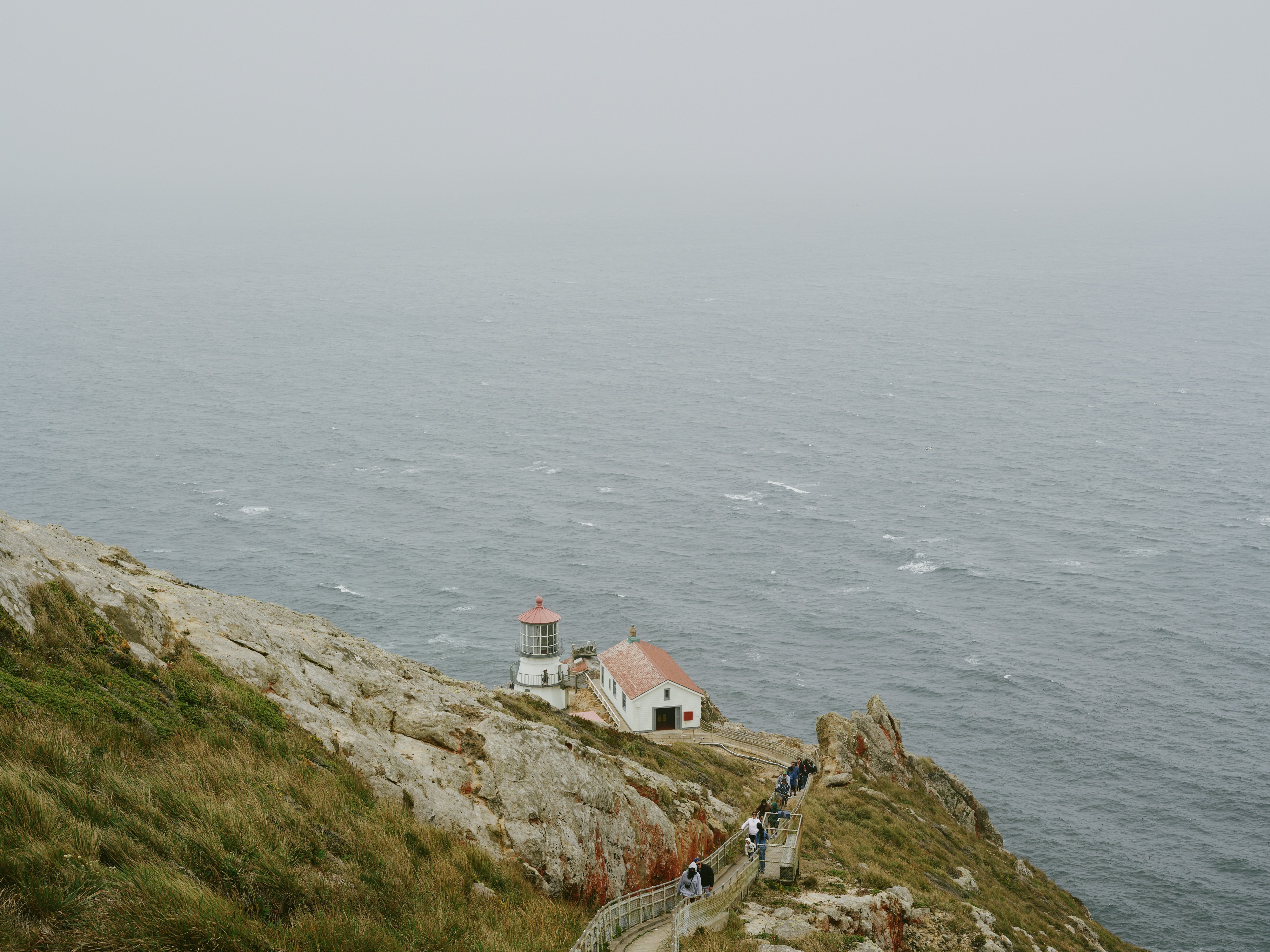
Stop 3: Bodega Bay and Point Reyes via Marin and Tomales Bay
Vibes: Take in salt-sprayed shores, oyster shacks, sweeping estuaries and migrating whales.
Do: At Tomales Bay (just north of Point Reyes), stop at the other (better? You decide.) Hog Island Oyster Farm for a waterside tasting; you can eat right on the patio. At Point Reyes National Seashore, walk to the Point Reyes Lighthouse (check for seasonal closures), hike the Chimney Rock trail for wildflowers and whale views, or stroll the Cypress Tree Tunnel in Inverness. Also visit the SS Point Reyes shipwreck in Inverness: a dramatic old beached ship – so very NorCal.
Eat: Oysters (obvious pick), clam chowder, smoked fish, local crudo or ceviche at coastal cafes will not disappoint.
Stay: Base yourself seaside somewhere like the Black Heron Inn or a family-owned B&B in Bodega.
The drive: The 40–60-mile stretch (depending on how much you meander) to Jenner progresses up the Sonoma coast on scenic coastal highways. Stop at pullouts in Sonoma Coast State Park or Bodega Head for sunset.
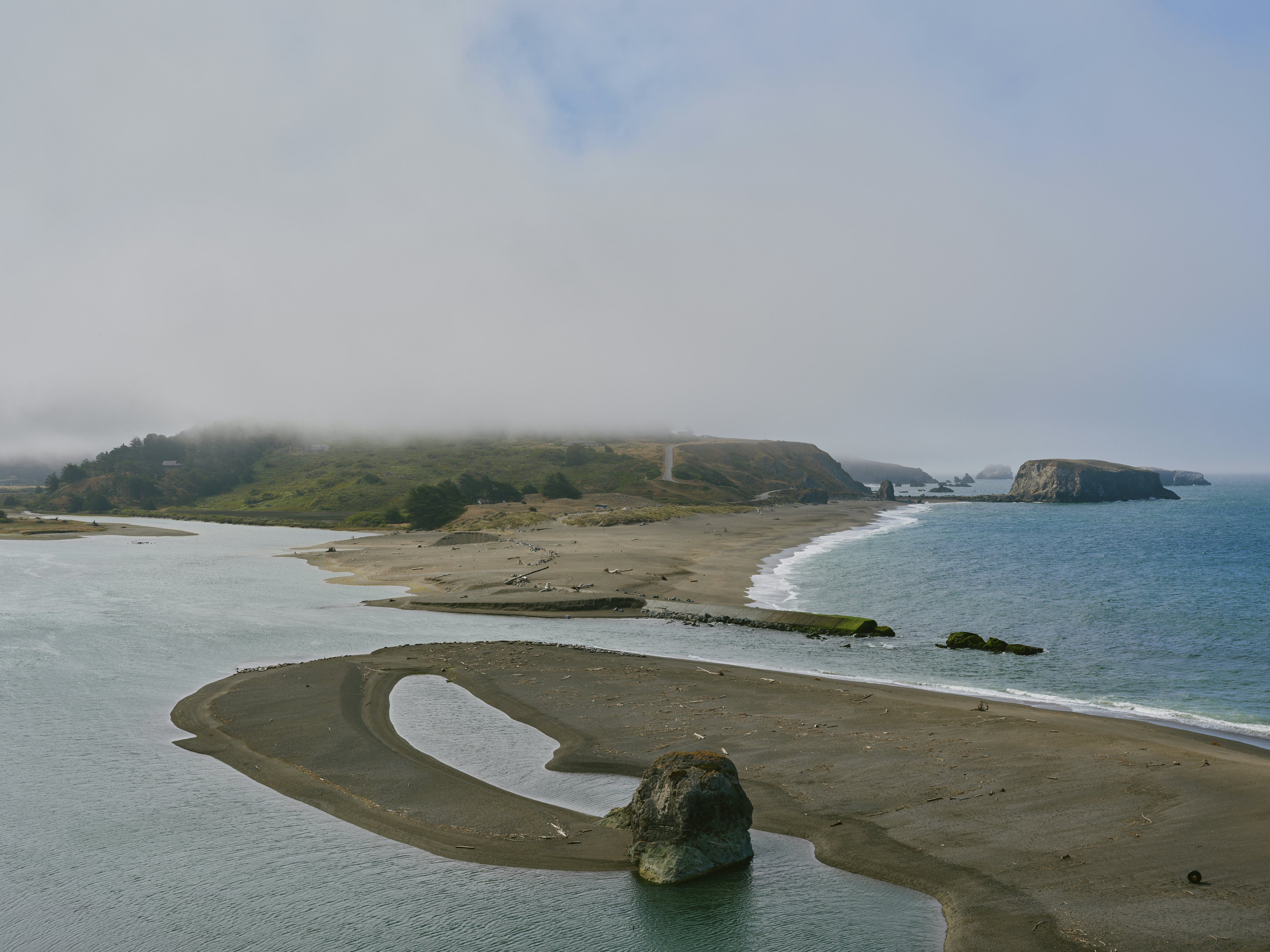
Stop 4: Jenner and the mouth of the Russian River
Vibes: At the remote yet charming point where the Russian River meets the Pacific, you'll encounter bluffs and dunes.
Do: Walk the Jenner Headlands Preserve, watch for whales offshore, or kayak the estuary if the tide allows. On a calm evening, head to the river mouth and catch dramatic light where the sea and river converge.
Eat: River’s End restaurant in Jenner – or any local cafe in the nearby towns – boasts seafood, fresh salads and local produce.
Stay: Seek out small lodgings near the coast or rent an estuary cabin.
The drive: Stop at the Point Arena Lighthouse about 35 miles north; you can hike up to the top for sweeping views across sea and forest. Gas is trickier here – top off in Jenner.




Stop 5: Fort Bragg and Mendocino
Vibes: The redwood coast lives up to its top billing, adding in some sea stacks, tide pools, quiet towns and forest lodgings.
Do: In Fort Bragg, stroll Glass Beach, visit the Mendocino Coast Botanical Gardens, and ride the historic Skunk Train through redwood country. In Mendocino Village, meander the Headlands State Park trails, walk to the bluff edges, and visit Point Cabrillo Light Station and tide pools aplenty. Also check out the Van Damme State Park Pygmy Forest trail and Little River.
Eat: Find fresh oysters (often local varieties), Dungeness crab (in season starting November) and seafood plates in cozy bistros with forest views.
Stay: Stay in a redwood cabin, charming guesthouse or coastal inn overlooking the ocean. Overnight at least 2 nights if possible.
The drive: What a finish line! If you’re continuing, head north along Hwy 1 to Leggett, where Hwy 1 merges with US 101 into deeper redwood country. Be prepared for steep, twisty highway segments. From there, SR 271 offers a scenic old-growth redwood route as a scenic alternative.
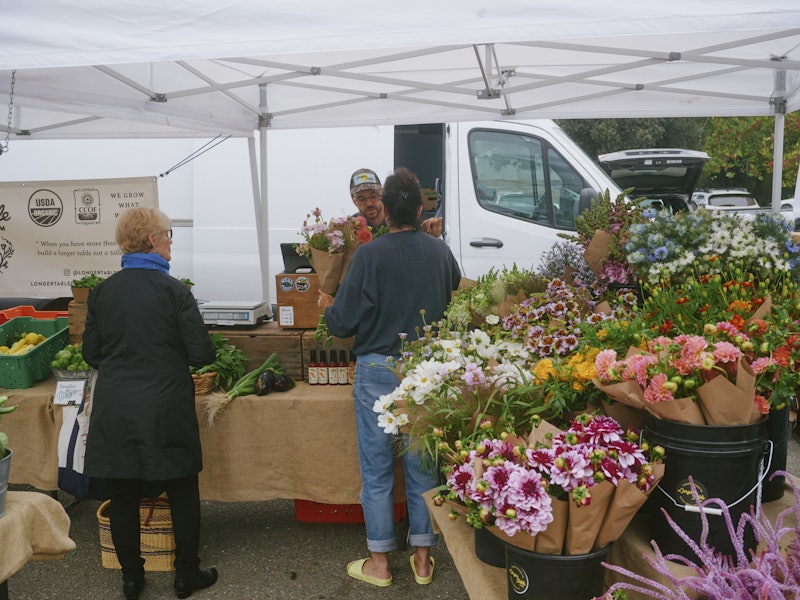

Extension: Anderson Valley and the Hendy Woods for wine and redwoods
From Mendocino, you can cut east via SR 128 to the Anderson Valley for good wine (and zero-proof) detours, then rejoin 101 toward Healdsburg or drop toward Sonoma or Napa. Along that leg, stop at Hendy Woods State Park – two groves of ancient coast redwoods in an intimate forest setting near the Navarro River.
Tips for EV drivers
Charging infrastructure for road-tripping with an EV in remote coastal parts is sparse. Bring your own level 2 charger (if possible), and plan your stops around larger towns with chargers, like Fort Bragg, or in Sonoma or Mendocino.
Use apps like PlugShare and ChargePoint to scout chargers ahead of time.
Because many stretches have no services, try to arrive at lodging with a full or mostly full charge.
Expect slower speeds in curvy coastal sections, which can help preserve range.
Be wary of limited 240V household plugs in remote cabins – don’t count on supercharging unless explicitly offered.

Why this trip works in fall (and beyond)
Whale migration: Migration season for gray whales begins around October. From headlands like Point Reyes, Jenner or the Mendocino coast, you might glimpse spouts offshore.
Clearing fog: While summer is famously fogbound, fall often brings breaks and spectacular golden light after morning fog lifts.
Fewer crowds, more space: Unlike the busier summer or New England’s peak fall, this trip allows breathing room.
Dramatic coastlines and moody weather: The shifting light, sea mists and tumultuous skies add cinematic drama – much of what draws people to Maine, but with redwoods.
So this year, swap your New England leaf-peep checklist for a fall sojourn along the Northern California coast. From Carmel’s fairy-tale feel to Bodega Bay oysters, from Point Reyes fog culminating in the forested clime of Mendocino, this route is a love letter to the moody charm of NorCal.
Drive slow. Stop often. And don’t forget your rain gear – because when the storms sail in, it’s all just part of the magic.









